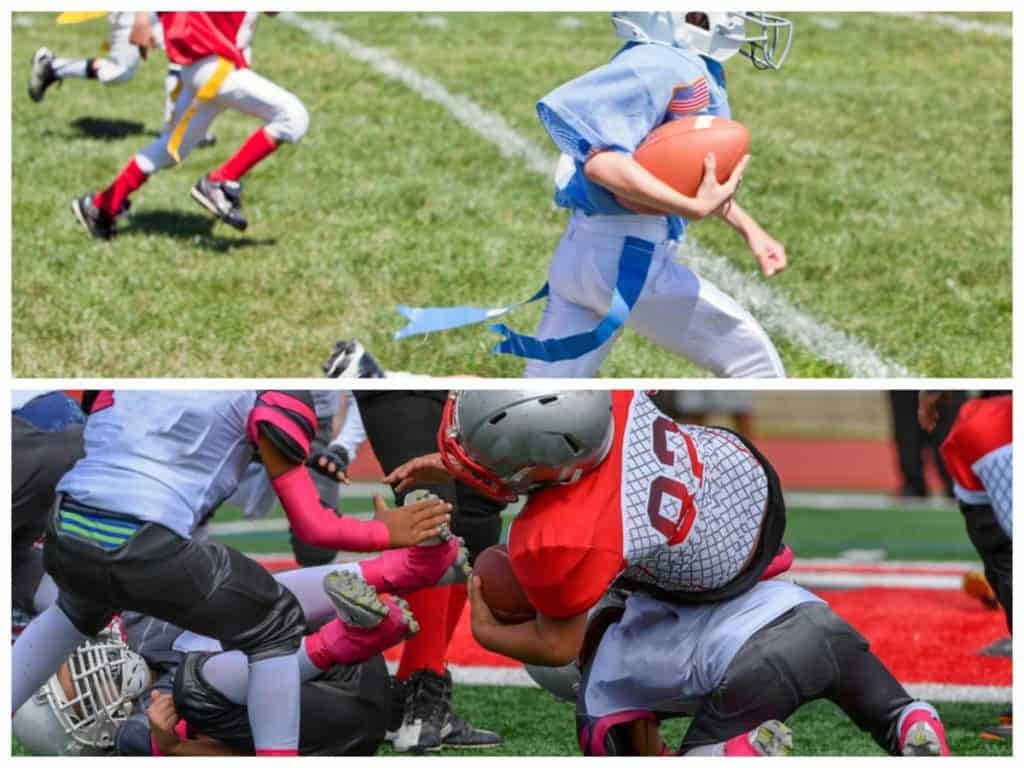
American Football to the rest of the world is a sport that mixes athleticism, strategy, agility, team spirit, and some mean aerodynamic jumps and leaps.
This tossing around of “the pigskin” is enthusiastically participated in and has a great following, especially in North America. They form professional leagues and tournaments of the highest orders like the National Football League or the NFL in the United States, and the Canadian Football League (CFL) of Canada.
This aggressive sport is beloved and extensively trained for all year. The way it is being practiced and played professionally around the world, as early as the mid to late nineteenth century, has led to modern variations in the style of play.
What is Tackle Football?
The more traditional form of Football is known as the Tackle Football, where the rules, structure, and the physical contact nature is kept as original as possible. The reason why it is called Tackle Football is that one of the main moves of this game includes the players to lunge and tackle their opponents literally .
This is done to prevent opponents from either passing the ball to teammates, making a throw into the End Zone or running into the goal area and score touchdowns. The physical nature of this game needs players to be physically bulky enough in terms of muscle mass and weight in order to hinder their opponent or completely stop them in their tracks.

Tackle Football is still one of the most competitive and expensive sports events in many countries, where they pay millions of dollars for players to sign contracts, and to organize Tackle Football tournaments. It is all so very glamorized in many ways.
In order to commercialize Tackle Football for spectators and people at home who watch the games on television, it is made into a spectacle where players are entertainers more than people who are dedicated to the sportsmanship and fair play.
Many times players are instructed to make very dangerous tackles and attacks on one another for the sake of making the game more entertaining to put on a show to play on the emotions of the viewers and fans.
The adrenaline rush that spectators get from watching their favorite team or player make a seemingly impossible move, evade or recover from a bone-crushing attack from an opponent – it is enough to get anyone hooked onto watching the game. But, this happens at a great physical and mental risk to the players who are put in a position to take months off from games due to the injuries they receive.
What is Flag Football?
One variation of Football that does not engage in close physical contact between players is the Flag Football.
The rules of this Football game remain the same, except for the contact part of the sport. So, instead of tackling, players of the opposing team have to pull a flag off the ‘flag belt’ on the player carrying the ball in order to stop them in their tracks and successfully stop the other team from scoring.
This is a fairly new form of Football, but it is making its way around schools in the elementary and lower levels as a safer alternative to Tackle Football.

Given below is a list of how Tackle and Flag Football differ.
9 Differences Between Flag Football and Tackle Football
1. NO Tackling
As mentioned above, the primary difference between Tackle and Flag Football is in the name itself: One uses the ability to tackle, and the other does not. When it comes to Flag Football, any form of physical contact leads to a penalty.
The game of Flag Football is given preference because of studies where professional Tackle Football players who retire are proven to suffer from mental and neurological illnesses. This is because this aggressive sport leads them to hurt the brain and the central nervous system. This leads to prolonged and even potentially lifelong damage, early retirement leading to failure to follow through on contracts and being out of work, and miserable quality of life after a life of Football.
As bad as this is for professionals, it is worse for kids as they are still growing, and the smallest of injuries while playing Tackle Football for fun can lead to many detrimental and life-threatening injuries.
2. More Fun for Kids
In comparison to Tackle Football, Flag Football is more about the fun of the game. Rules are kept, teamwork is improved, and on the individual level, all players hone in their skills like agility and strategy and evasive maneuvers.
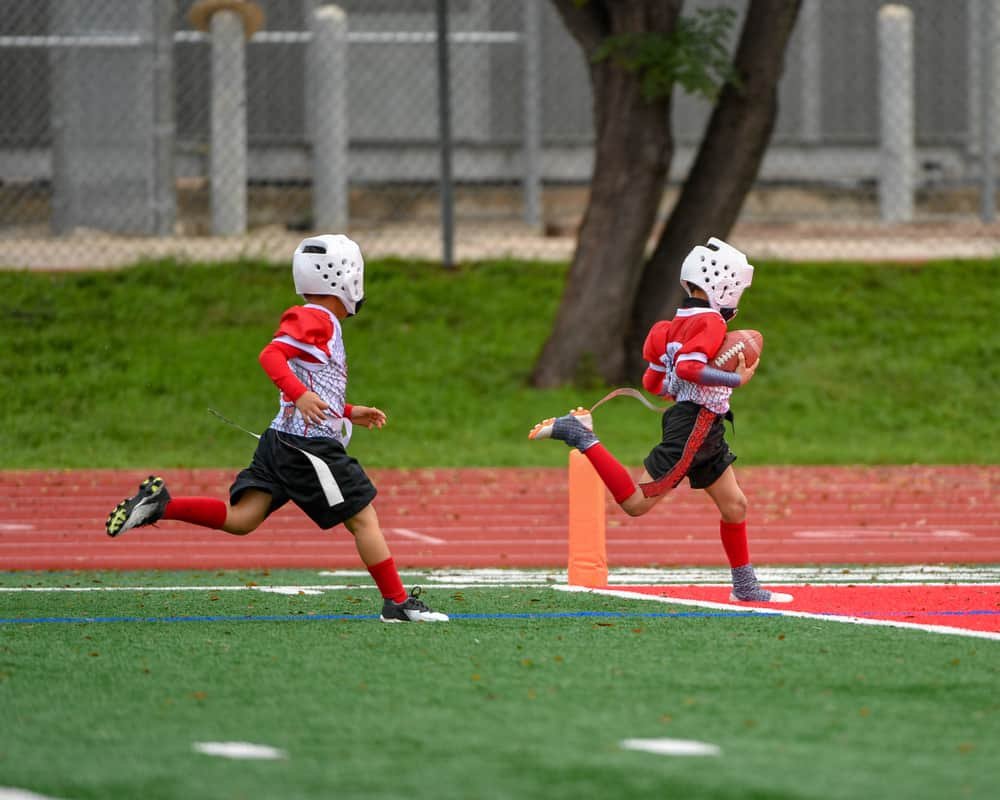
The fear of getting injured is out of their minds and the minds of all the people involved in the game, including the players, coaches, and parents. This leads to better game experience without the nagging doubt on whether the next injury could be fatal or life-threatening.
3. Practice Timings
Most schools encourage sports and Tackle Football practice almost every day of the school week, including Saturday. This is because the sport is commercialized and involves a lot of money and investors who are always looking to donate to schools with more sports-related potential.
There are also talent scouts who work for professional teams looking for new players. This leads to grueling practice sessions that include getting tackled and shoved around on an almost daily basis.
In this way, consistent exposure of even small amounts of trauma to the body can lead to long-term effects on the health of these student players. Flag Football tries to address this problem where the practice sessions are reduced to three to four times a week or less, with the inclusion of turning Football into a no-contact sport.
4. Pitching & Throwing
Pitching is a move in Tackle Football where a player can toss or throw the Football to a teammate from a line of scrimmage that will lead to setting up a big play. Therefore, the ball is not only kept safe and clear from the opponents that surround the person holding the ball and try to make him drop it but also chances to score big. This way, a team has a chance to guard the ball and also score with high probability when the ball is passed long distances and away from danger.
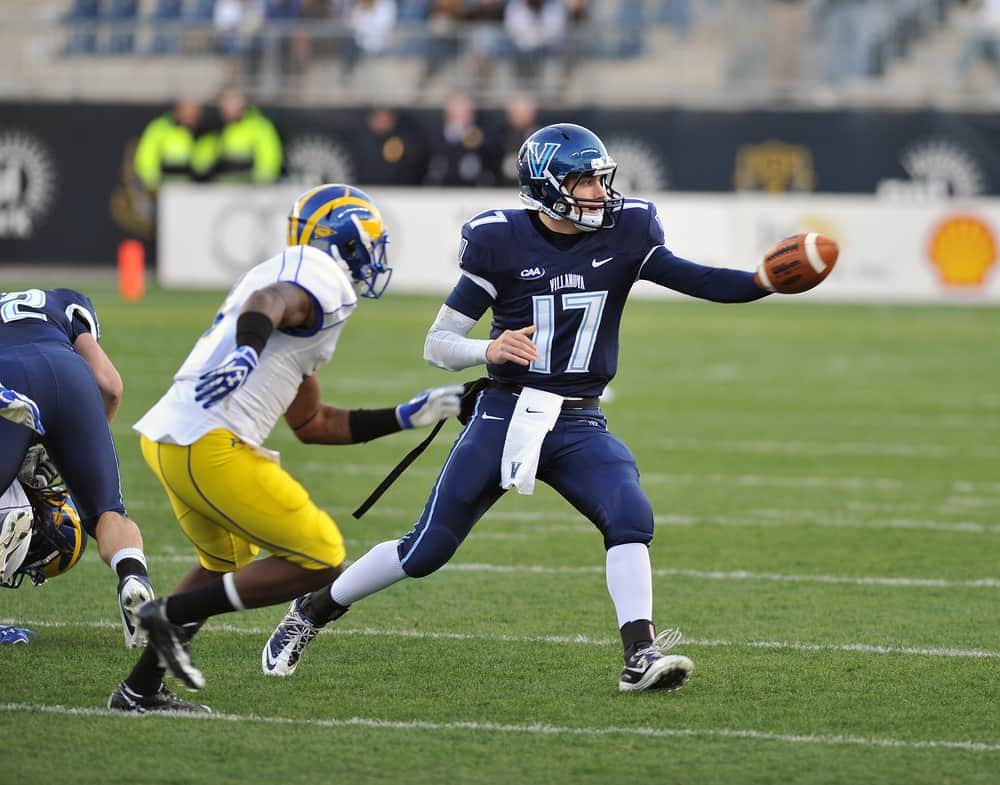
In Flag Football, it is illegal to make a ball pass from player to player from a line of defense or attack from the opponent team if it will lead to a big scoring pay off to the scoring team. It can lead to the imposing of penalties or taking players off the field.
But a player can definitely pass the ball to a fellow teammate from a line of scrimmage from the defending team if it will be only for the reason to keep the ball away from danger. This is known as “shuffle play” or “shuffle pass” as a football move. It basically means “shuffling” the ball or the ball changing hands from player to player till the scoring line.
5. The Stiff Arm
In Tackle Football, there is a defensive move where a player holding the ball is allowed to ward off opponents by stiff-arming their opponents. This way, the player holding the ball can extend their arm out and fend off attacking opponents that lunge or jump at them. This move has a player shove their hand at their opponent’s head with the arm that is free from holding the ball.
That move, however, is illegal in Flag Football as it includes a form of physical contact with another player. This move packs a lot of arm strength that is transferred to the head of a player, enough to render severe muscle or nerve injury to the neck or head of any football player on the receiving end of this ‘stiff arm’ or ‘straight arm’ move.
6. Jumps and Dives
When it comes to Tackle Football, players are allowed to jump on or dive onto a player to stop their opponent from scoring points or making a home run. Also, players holding the ball can jump or dive in order to score points by leaping over the end zone line. This is not allowed in Flag Football.

A player holding onto the ball in flag football is only allowed to hold onto the ball and keep running towards the goal post as long as their flag is still on them. Teammates can work towards ‘deflagging’ other players as well. But no jumps or diving allowed.
There are also instances where the runner with the ball dashes for the goal post to score a touchdown. But if the player dives into the scoring area, then the touch down will not be counted as valid.
7. The Press Coverage
This is another defensive maneuver in Tackle Football where a player is allowed to use a move called the press coverage. Also known as a bump-and-run coverage, it is where an aggressive player runs up to an opponent like a wide receiver who is seemingly looking like the ball is going to be thrown to them from a large distance.
In this instance, the aggressive player tries to impede this receive by pushing his arms, shoulders, and torso at the wide receiver with the aim to interrupt the receive and hopefully make the ball touch the ground.
8. Other forms of Physical Contact
As mentioned above, any contact for either defense or offense purposes in Tackle Football is rendered illegal and hence, outside the realm of Flag Football. This also includes grabbing hold of or latching on to the players of the opponent team.
9. Fumbling
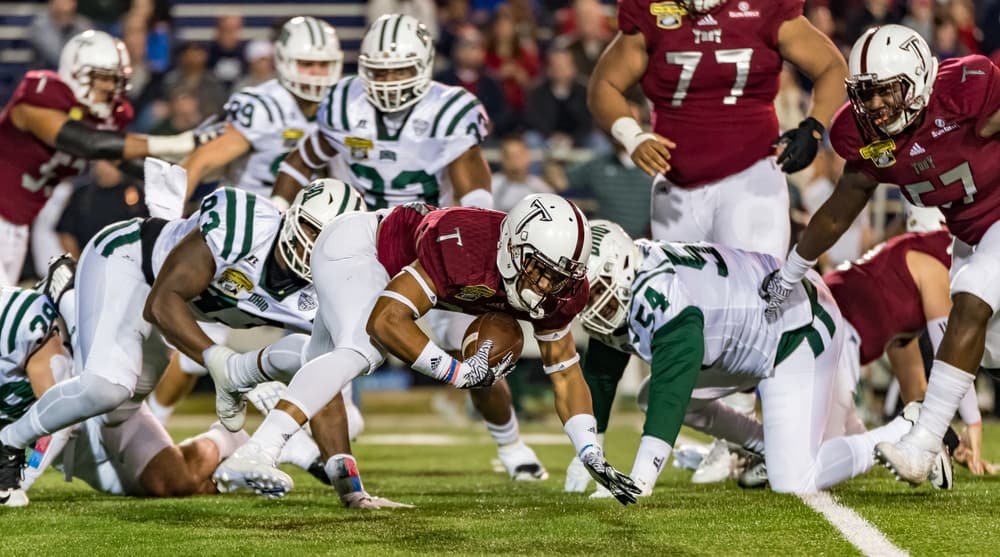
Fumbling happens when a player holding the ball makes a mistake and accidentally allows the ball to bounce off the ground and back into his hands. A very delicate and rare situation, as when the ball falls to the ground, it is considered as the loss of a potential score and all players have to line back at the center of the field. This is the case for Tackle Football.
When it comes to Flag Football, fumbling is prohibited. In fact, there is no such compromise for the event of a ball fumble. As long as the ball touches the ground, it is considered a ‘dead ball’ and players have to line back and begin again.
All things considered
The introduction of Flag Football has surfaced as a safer yet still sporty alternative for, especially, younger enthusiastic players of the game.
The nitty-gritty Tackle Football has given rise to studies that have alarmed many people around the world on not only the potential dangers of this sport but also the real-life toll that it takes on the physical body. From just one practice session to another, excluding playing during the real games and especially in the professional tournaments, any session could prove accidentally fatal.
The establishment of the game goes as far back as the early eighteenth century when it started surfacing as a nationally acclaimed sport. So, it is definitely difficult to change many aspects of the mainstream Tackle Football system and the way the games are played.
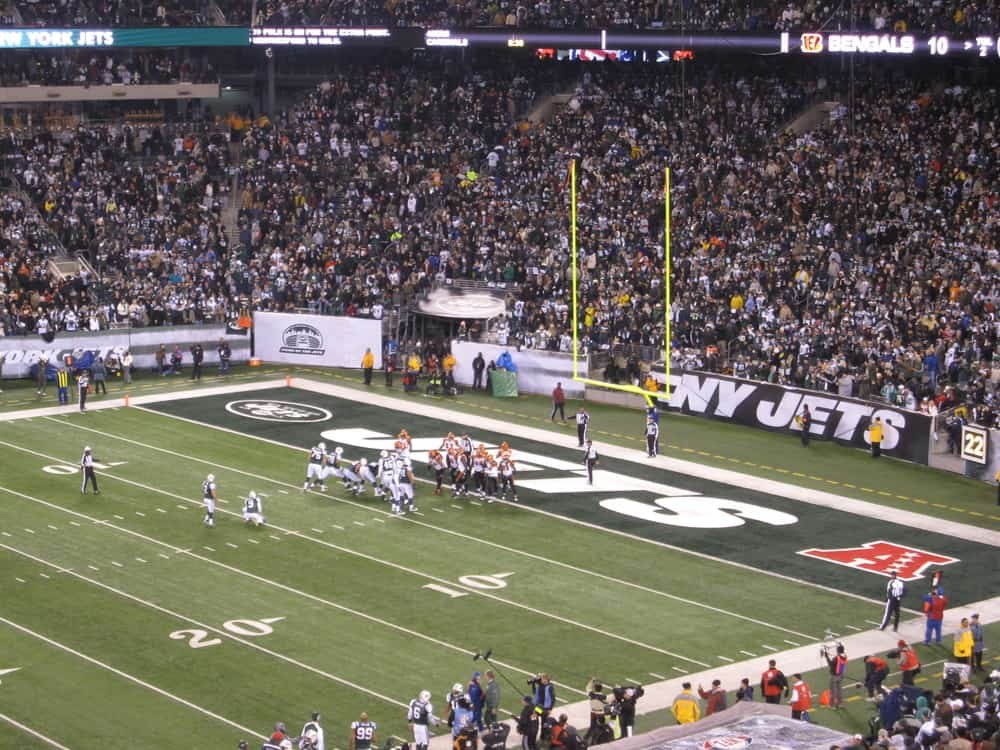
Especially in this capitalistic economy, this has become one of the most lucrative sports, especially in the United States of America. Flag Football might lack in terms of excitement and the brutality of the game – an element that everyone loves – but it is still able to provide the feel of the game and that too without the added threat to personal health.
